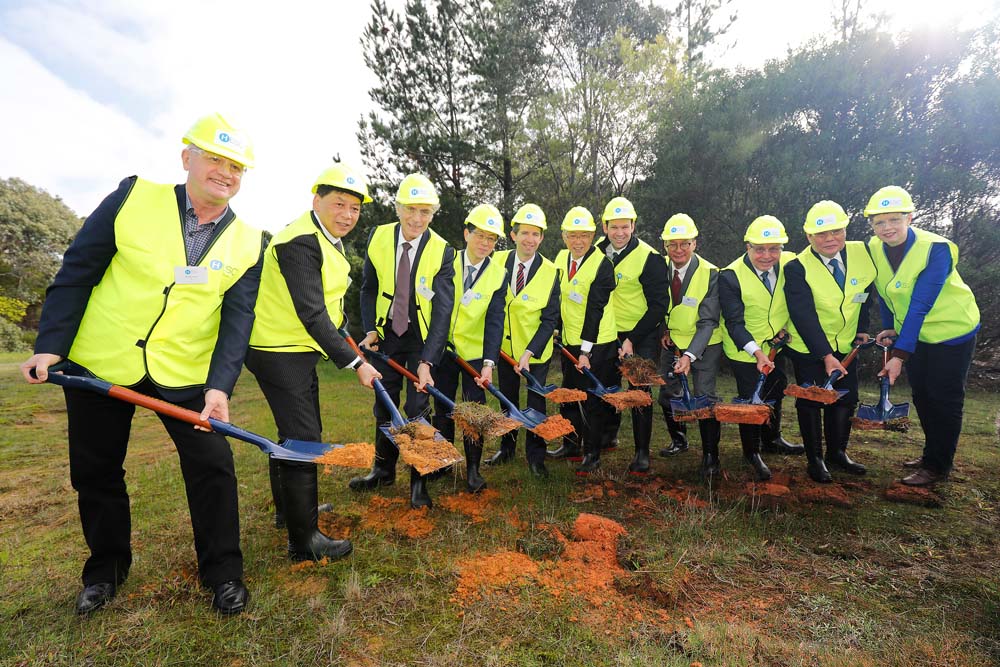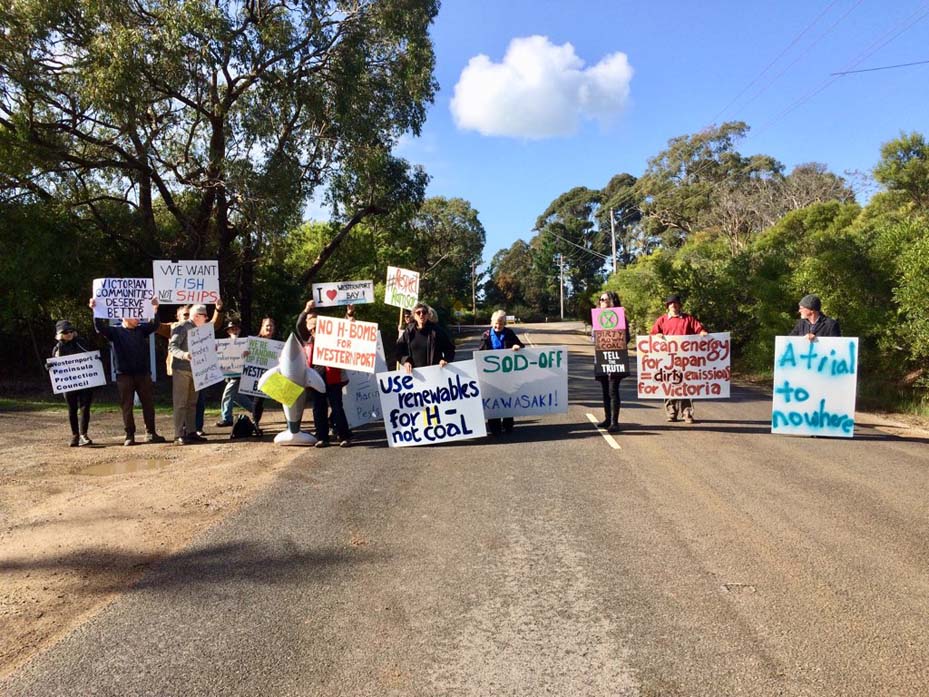

AN official ground breaking ceremony was conducted at Hastings on Friday (19 July) to mark the start of building a plant to liquefy hydrogen gas for export to Japan.
The plant in Bayview Road is an integral part of the supply chain for hydrogen made from brown coal in the Latrobe Valley to be exported to Japan.
The state and federal governments have each given $50 million towards the $400 million trial that Kawasaki predicts “will create a new innovative technical foundation for the development of an exciting hydrogen export industry for Australia”.
Protesters from eight environment and community groups are unimpressed by such glowing predictions and stood in Bayview Road holding placards and handed out their demands for the return of the $100 million of taxpayers’ money.
The protesters say while motorists overseas benefit from hydrogen power, Australia is left to dispose of the carbon released in the process and Western Port’s environment is in danger of marine pests carried in ships’ ballast.
“Delivering clean hydrogen to the world for the benefit of our environment is a goal we share deeply, and we look forward to achieving,” Kawasaki’s chairman of the board Shigeru Murayama said. “The hydrogen economy is already materialising in Japan, and it is wonderful to now be breaking ground here in Australia. We are excited to be translating our joint hydrogen vision into reality.”
The line of VIPs pictured turning the first sod included federal Resources Minister Matt Canavan, Tourism Trade and Investment Minister Simon Birmingham, the state Treasurer and Economic Development Minister Tim Pallas, Australia’s chief scientist Dr Alan Finkel and Victoria’s lead scientist Dr Amanda Caples.
Notably absent from the line-up were peninsula-based politicians Flinders MP and Health Minister Greg Hunt, Nepean Labor MP Chris Brayne and Hastings MP Neale Burgess.
During his time as environment minister Mr Hunt frequently spoke about the utilising Australia’s vast coal resources and, in mid-2014, predicted technology would be available within three to five years to reduce emissions from coal-fired power stations by 30 to 50 per cent.
Mr Hunt’s office confirmed he “was not in attendance”. Mr Brayne’s office manager Joshua Sinclair said Mr Brayne had not been invited to the sod turning.
Mornington Peninsula Shire mayor Cr David Gill said he was invited but decided against attending “because it would look like I support the process”.
“What benefit does the public in Australia get from Japanese motorists having clean energy while we keep the carbon that’s left behind,” Cr Gill said.
The hydrogen plant at Hastings includes a liquefaction building and a storage container to be completed by June 2020, with the target of it operating from 2020 to 2021.
Kawasaki says will use its know-how and experiences gained in past liquefied hydrogen and industrial plants to deliver the project safely and on time.
“If the full-scale project is too damaging, expensive and inefficient to go ahead, there is no need for this trial they are celebrating today. As they turn the sod, we say sod-off,” Westernport and peninsula Protection Council secretary Karri Giles secretary said in a news release on Friday.
“Four industrial processes and three journeys make this project ridiculously inefficient when, apparently, making hydrogen in Japan out of water and excess renewables is an option.”
Friends of the Earth campaigns coordinator Cam Walker said the hydrogen project “is entirely dependent on the successful injection and long term storage of carbon waste into the Ninety Mile Beach seabed, yet despite billions of dollars of investment in this technology it has failed to become viable in Australia”.
The group’s coal spokesperson Kate Wattchow sees the brown coal to hydrogen project as “yet another clean coal pipedream, a false-promise to the Latrobe Valley community and an expensive distraction in a time when we need urgent action on climate change”.



